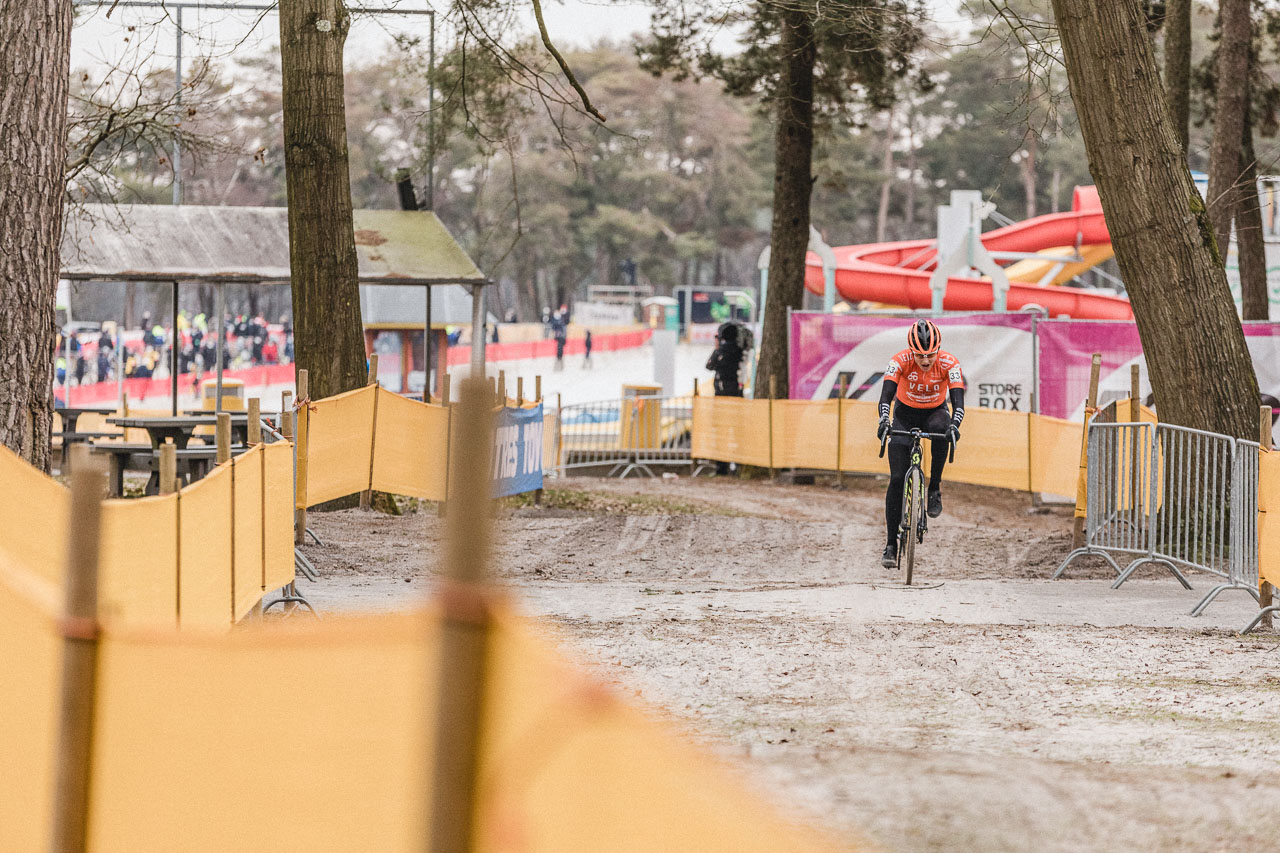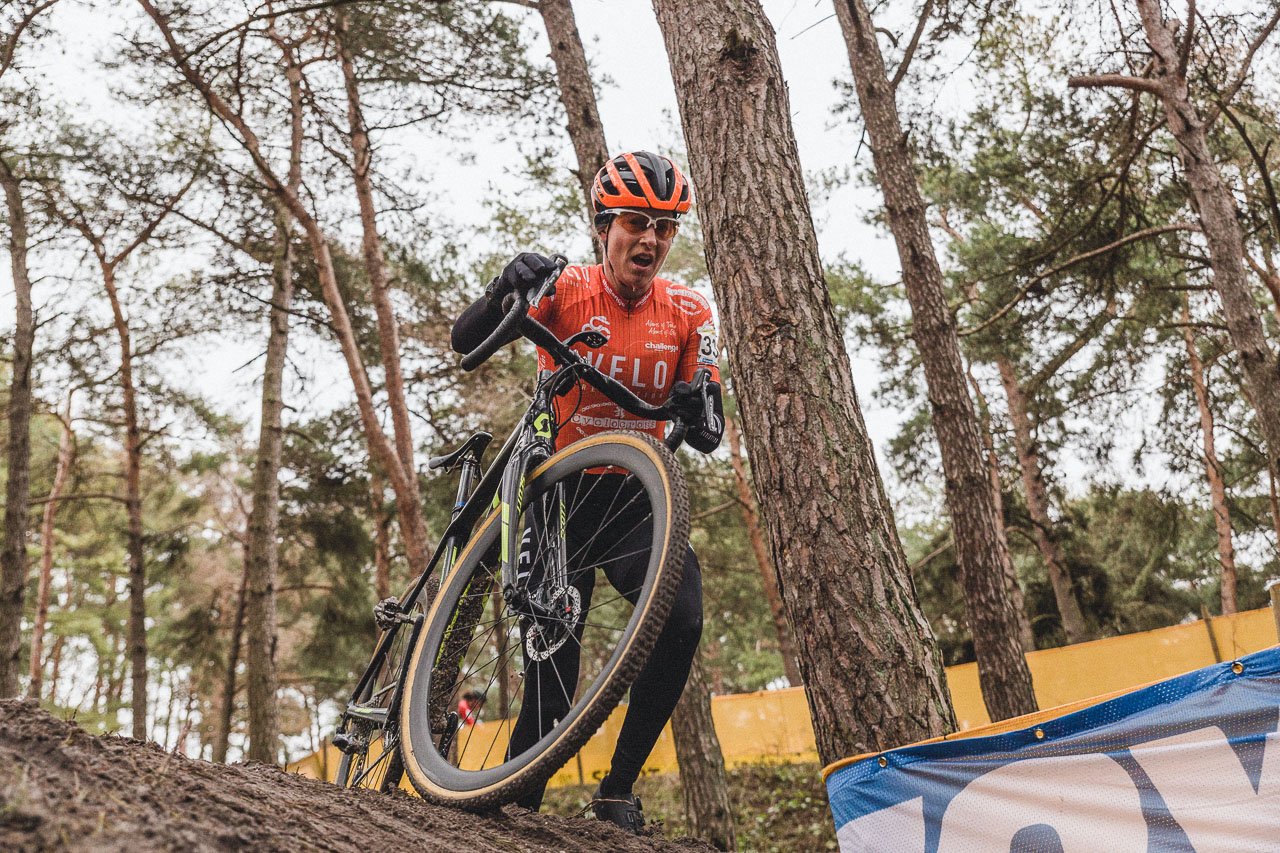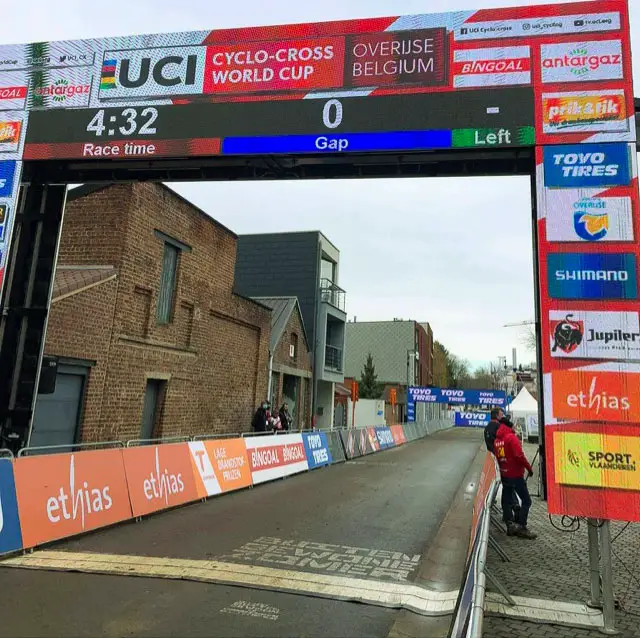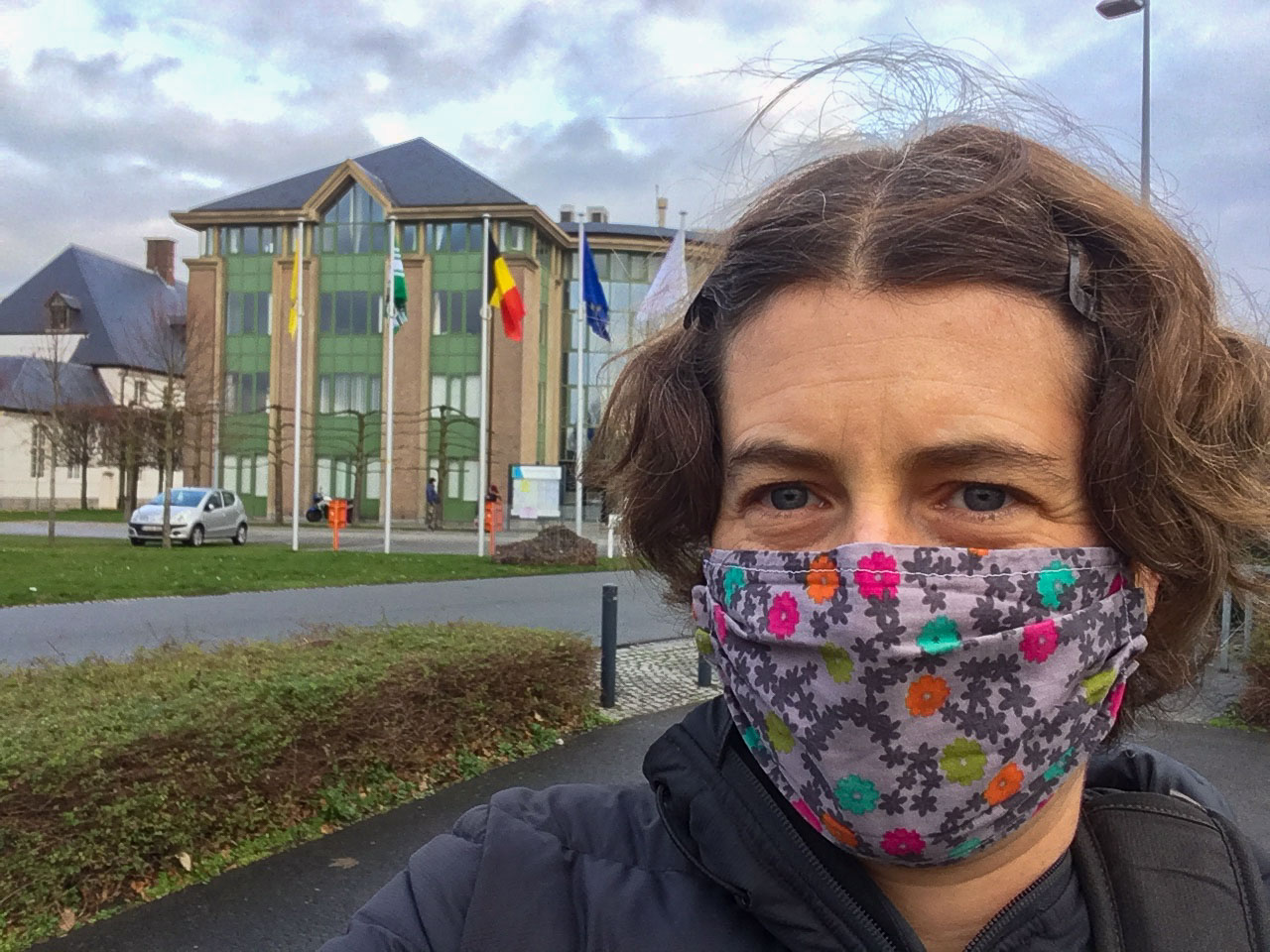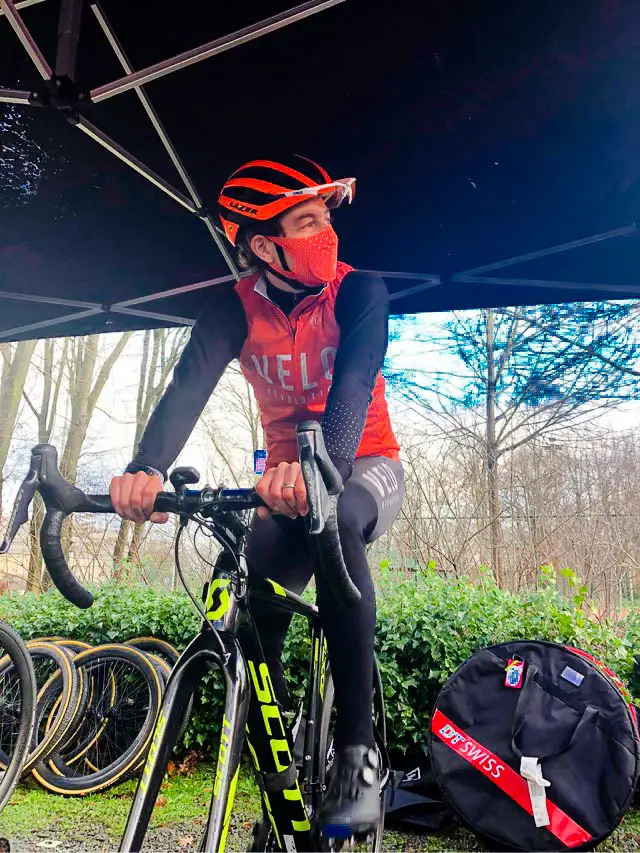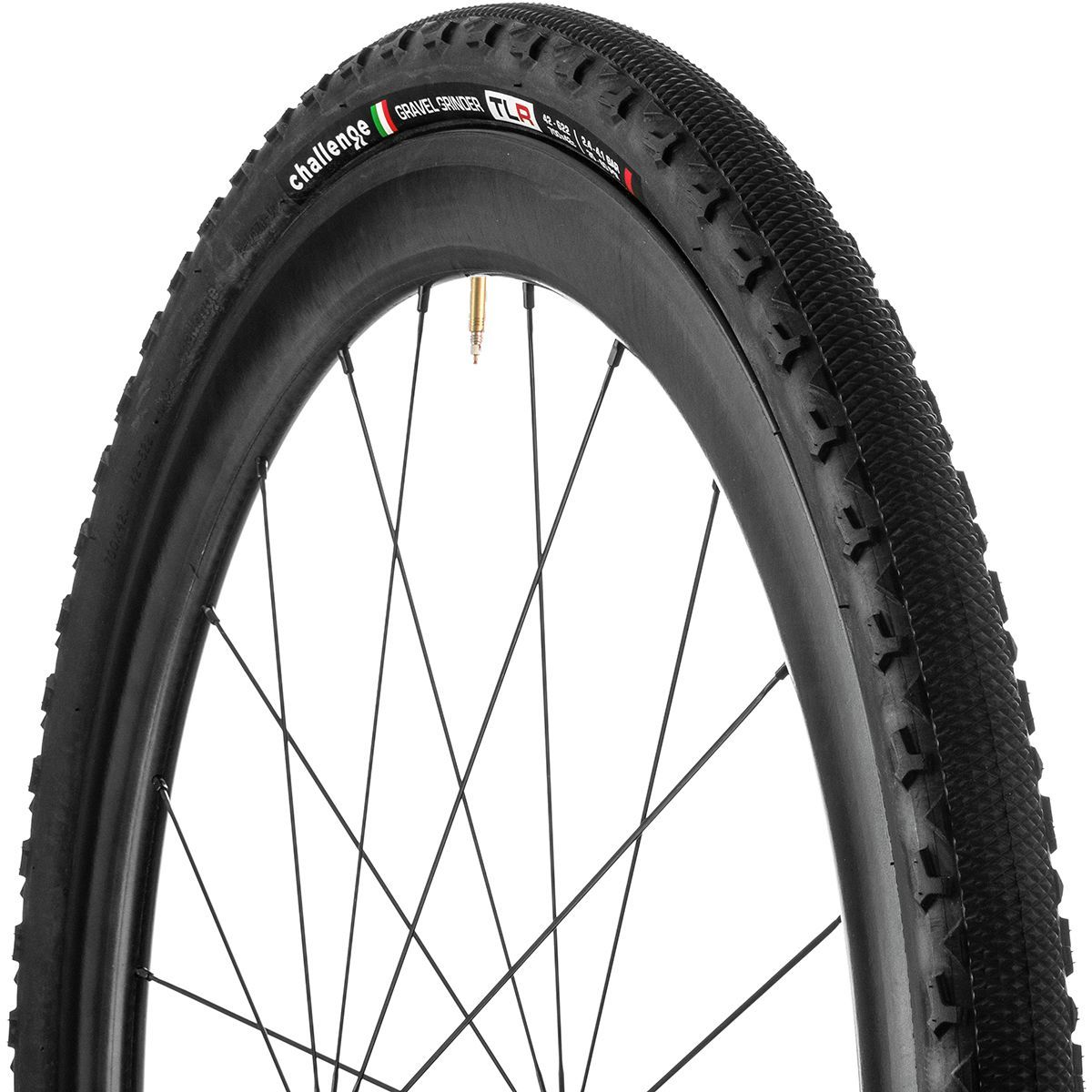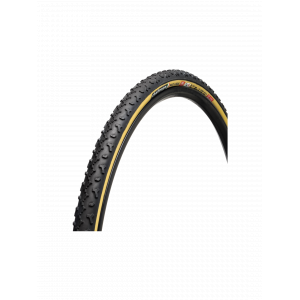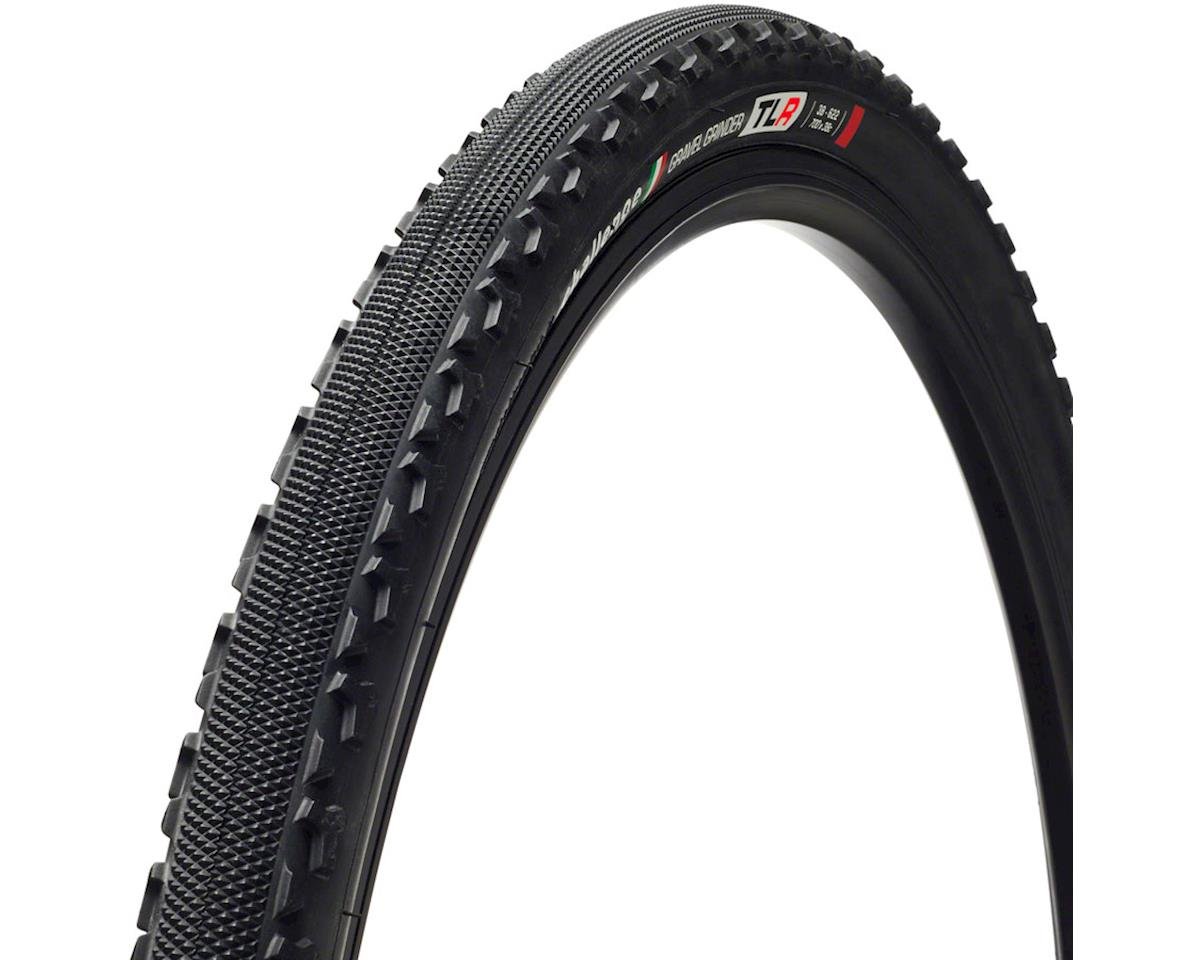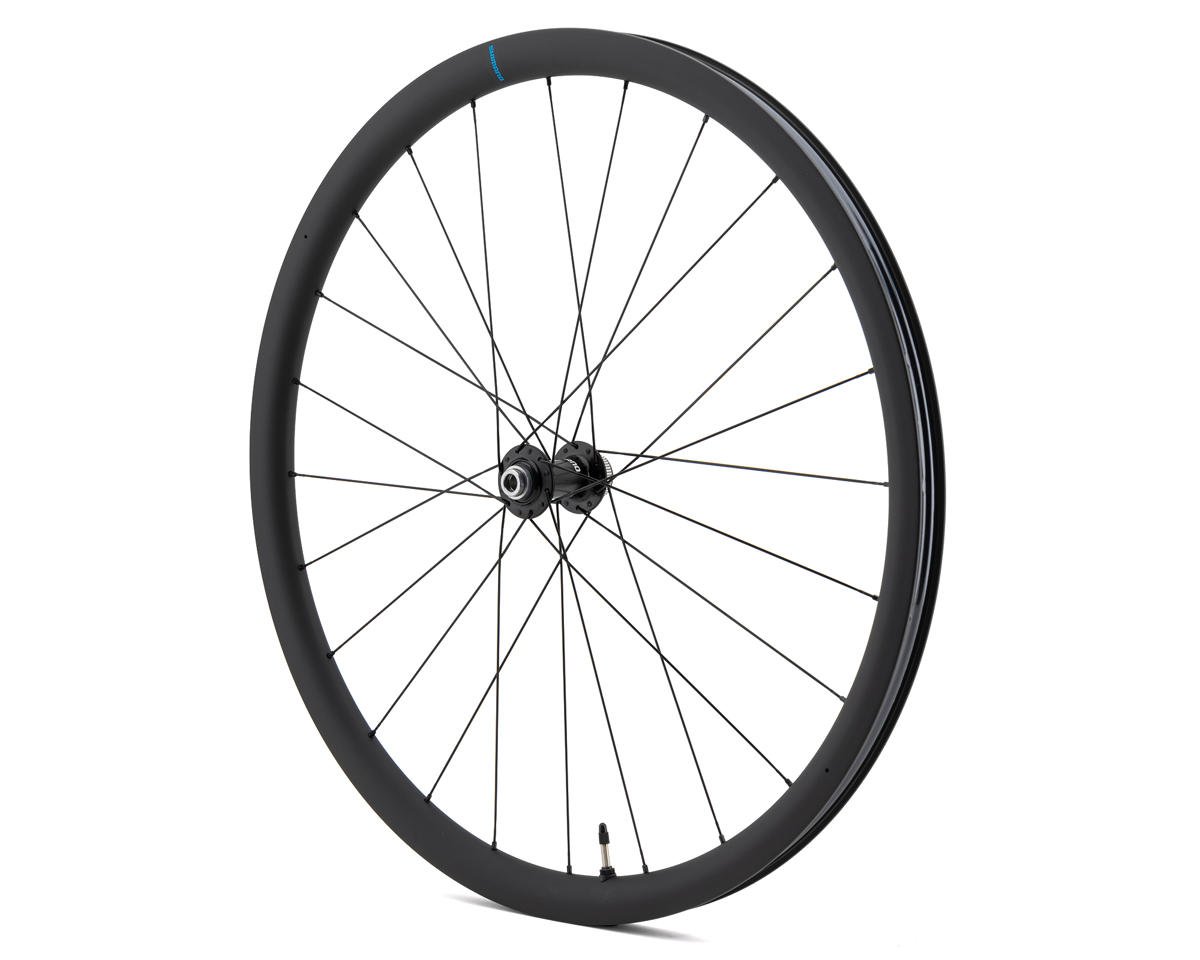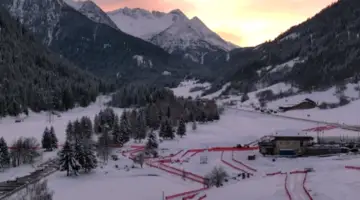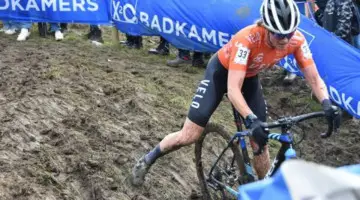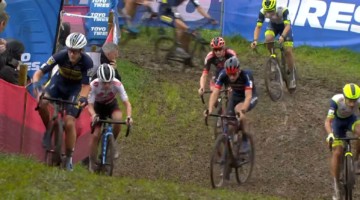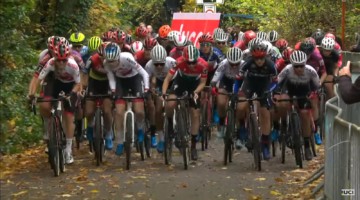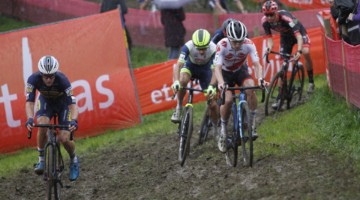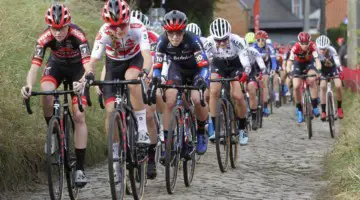Belgium-based cyclocross racer Corey Coogan Cisek is back with a final column of her cyclocross season, with a journal of her post-Kerstperiode races and a tough, scary bunnyhop of one final barrier.
My take on this cyclocross season? It was hard…harder than I expected.
I’m now back home in Minneapolis and hanging out in post-international travel quarantine, skiing, and working hard in the kitchen. Although, in fairness, my domestic travel felt way riskier!
Form Comes then Goes then Comes Again
My results this season were the jagged shape of shark teeth, dramatically up and down.
I started the Belgian season with little form. Although I wasn’t lacking for fitness, I was lacking for race starts. At my first race in Ruddervoorde, the race went and I didn’t. My body was shocked by the effort.
There’s nothing that replaces time spent racing. Typically, we start the season with others who are also just starting the season. Yes, there are roadies and mountain bikers who might come in with slightly better form. Still, the killer intensity of cyclocross, running with a bike and cyclocross-specific skills are an adjustment for all. Not so, this year.
We North Americans flew over, quarantined and jumped into a season that was already well underway. Clara’s first races abroad? 20th and 23rd. Becca’s first race? The last rider to finish on the lead lap. They were patient and their form came around (Clara’s in a big way!), but none of us were in fighting form to start the season.
Personally, my form came around…but then it fell apart…and then came back…and fell apart—shark teeth. The term that could be applied to my season? Erratic.
When I last wrote to you all, post-Kerstperiode, I was fighting a battle with fatigue. My mood was dragging on the floor. For the first time ever, ever, in my life, cycling felt frighteningly not fun. It was the first time I’ve really wondered: Is it worth it?
How do you know you are tired? Your mood turns. Sure you’ve got HRV, RPE, TSB, sore legs, fatigue, but you also become “difficult to deal with,” moody and glum–Eeyore. I was there. Somehow, quite suddenly, the world had grown inexplicably dark.
Fortunately, I’ve had enough life experience to know when I’m in a bad way. Likewise, it was time for post-Kerstperiode rest anyway.
I rested for a week (alternating between rest days and recovery ride days) and then resumed training but in a reserved way. As I told my coach, Helen Wyman, “I think I have about three matches left to burn and I only have three races left, so…”
I stopped burning matches in training.
Form Rising—Mol, Hamme, and Overijse
Mol Zilvermeercross
Mol is one of my favorite races. Ironically, despite being an American, I love sand races. The cancellation of Koksijde and Zonhoven disappointed me greatly as my best European performances were there. Mol is not the same. The sand is finer, different. I’ve heard some Belgians wax poetically about the many types of sand in Belgium. They are right, I am better in Koksijde sand than Zonhoven sand than Mol sand. Rankings of sand…
Mol is a race with many memories for me.
My first season in Belgium, Fall 2017, Mol was my second race. I was mistakenly assigned to someone else’s parking space. This infuriated the Belgian who “owned it” as a result of camping out there the night before. Yes, camping out to reserve the best parking space is a “thing” in Belgium. After he expressed his displeasure in no uncertain terms, I slunk off and had a good pre-race cry. My race that year was only slightly better than the parking debacle. I dug my bike into the sand and flew over the handlebars, ran a lot and learned how difficult it is to clip back in in sand. But that was 2017…the one and only time I cried about parking!
This year’s Mol result did not appear amazing on paper—rather status quo. Yet, Mol was a great opportunity to savor just how far I have come. I could ride all these features that had been “default to run” (or crash) in previous years.
Even with good legs and a good race at Mol, I was somewhat conservative in the week leading up to Hamme and Overijse. I did just one “hard” workout (and even that was easier-hard). Otherwise, I trained to stay open and arrive at the weekend feeling as best I could.
Flandriencross Hamme
I’d never raced Hamme before—what a fun-house that race was! The course is supremely technical (never frightening, but always testing) and the mud made it all the more so. It was a solid day of racing for me—one of those days where I should have made lead lap.
This season, the 80% rule enforcement has been more chaotic and confused than normal. In one race, riders are getting pulled early, the next, riders are getting lapped. (Of course, calculating the number of laps for a 40 to 50-minute race has been a challenge for years as well.)
To be clear, the last thing I want to do is stay in a race if I am outside of 80% or in danger of being lapped.
That said, there have been a few irksome times when the math didn’t seem to compute. I wonder if the lack of fans played a part. After the first 10 or 15 finishers cross the line, the camera cuts away, the “entertainment value” ends. When the crowds are back, there may be motivation to send more rides for another lap. Give the fans a chance to cheer and jeer and throw beer on me for another “ronde.”
Overijse World Cup
I think Overijse may have flown under many North American fans’ radar before this year.
While Overijse is a historic race (held since 1960), it has not been part of a series in recent years. Honestly, it always felt a bit, well, “low budget” to me. “Overijse Druivencross” was one of the very few races that did not use chip timing. Fewer top riders attended due to less contract money. What really rubbed me the wrong way? The lack of bathrooms was more pronounced than any other race.
Despite the underwhelming bathroom situation, Overijse has always been a favorite of mine. It has two things that make me happy: a huge climb and extremely technical, slippery descending.
With this in mind, I scheduled my 90-day Euro block around Overijse. Perhaps, you remember that Overijse was originally scheduled for October back-to-back with Koppenberg? (Two brutal climbing races in a row?!)
Anyway, I arrived on October 9th, specifically to have time to get used to racing and ready for Overijse. Days after I arrived, the World Cup schedule was shuffled, making Overijse the January World Cup finale.
Ultimately, I used the date change to my advantage. My 90-day Schengen “short-stay” would have run out on January 6. Accordingly, I applied for and received an extension under the category of “compelling personal reasons.” Because of COVID, the timeframe of my work was extended and I needed to complete my business in the country. The extension allowed me to stay until January 26.
It should be noted: I may not have won any bike races this season, but when it came to immigration and border control, I was “a topper!”
Overijse proved as sweet as much of the rest of my season was bitter. I had a very good race (my very best race of the season) on the very last day of the season. It was an “I needed that” day to wrap up the season. I was doubly proud knowing resting more/training less had brought back my form and headspace.
A Note on Fatigue
Physical stress and mental stress are experienced exactly the same way by the body.
Going into this season, I would have said I was fine. I was managing the toll of life in a pandemic, our community’s pain following George Floyd’s murder, my parents contracting COVID-19, the agonizing political situation in the U.S…
However, my completely erratic, “shark teeth” pattern of results suggests I wasn’t managing as well as I thought. Happy racers go faster…
I made it all the way to Belgium, but I brought the struggles of America in my luggage. Like many fellow U.S. riders, I was over there, “living the dream,” yet I wasn’t entirely A-OK.
When the Capitol attack happened, it was nearly bedtime. We “Americans abroad” went to sleep not knowing just what we would wake up to.
In Hamme, we compared notes on recent politics. Many of us had watched an inauguration start-to-finish for the first time ever…
With the exception of the weeks post-Kerstperiode, I trained as I always have in Belgium. Over Kerstperiode, I raced more races than normal. Thus, my physical stressors were ordinary. Yet, the mental stress of the entire year was, well, “unprecedented.” My body had more stress/more load than ever before. Sometimes (the dips in the shark teeth), I couldn’t manage the load.
Doubtless, I wasn’t the only North American who experienced this.
Getting Home Is More Than Half the Battle
This was the first year that I was very eager to go home when the time came. The strength of my desire to go home grew in proportion to how difficult it was to get there.
Recently, in light of the proliferation of new variants, EU countries have imposed much stricter mitigation measures. The Netherlands, while slow to respond in the spring, now seems to be leading the way, even implementing a nationwide curfew for the first time since World War II. Moreover, they have enhanced testing requirements for air travel, requiring a PCR test within 72 hours and a “fast-test” within four hours of a flight’s departure. Since I was flying Delta and flights are extremely limited, I had to transit through Amsterdam.
I left Oudenaarde at 2:30 am to arrive at the Brussels airport for a 4:15 am preflight fast test. I arrived home in Minneapolis at 2:00 am Belgium time, the following day. Routes are, um, less direct than pre-pandemic.
Travel in Europe is currently strictly regulated, and most countries allow only a very narrow definition of essential travel. As a result, airports are all but empty.
The Brussels airport is now tightly controlled. You may only enter the airport if you are flying. There are public health guards at every entrance to ensure you have airport business and are masked. My COVID test documentation was checked three times before boarding and I saw several passengers denied boarding due to missing the fast test. The airport was largely shut down. I mean, of course, the duty free shop was open! However, most other businesses were shuttered with only essentials available at select shops. Mask wearing was generally very good. Yes, there’s always “that one” whose nose escapes, but by and large, faces were well-covered.
Then I arrived in Detroit, USA…
The Detroit airport was busy…not pre-pandemic busy, but at least ten times the occupancy of Brussels or Amsterdam and clearly not limited to “essential travel.” Many restaurants were open. Belgium is still “take-away” only, so seeing a restaurant with plates and people sitting unmasked was…wild…wildly frightening.
Although Delta requires masks, their enforcement was spotty on my domestic flight. Only a few of the crew members were willing to remind passengers to re-mask after eating, etc. (On the international flight, I saw no mask problems.)
Put politely…it was a culture shock. I have grown used to mask-wearing being ordinary, a not-for-debate show of community respect.
Flying, like cyclocross, is a privilege, not a right.
On the heels of this season, I reflect upon how amazing it was that we had a cyclocross season. Yet, we had this season because a whole lot of people were willing to take on measures that might have been annoying or difficult.
Put politely…it was a culture shock. I have grown used to mask-wearing being ordinary, a not-for-debate show of community respect.
I acknowledge that we had the benefit of testing to create a safe cyclocross season. That said, other factors were in play. Outside of races, riders stayed in bubbles and exercised the utmost caution to avoid infection.
At races, we wore masks outdoors, except when pre-riding, warming up, racing and cooling down. Fans respected the rules and watched cyclocross from home.
This season felt like, well, if we all work together, “we can have nice things.”
Read more of Corey Coogan Cisek’s cyclocross adventures across the pond here.













